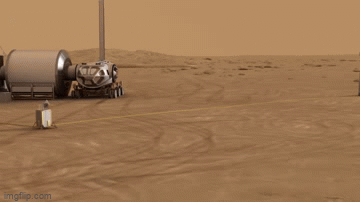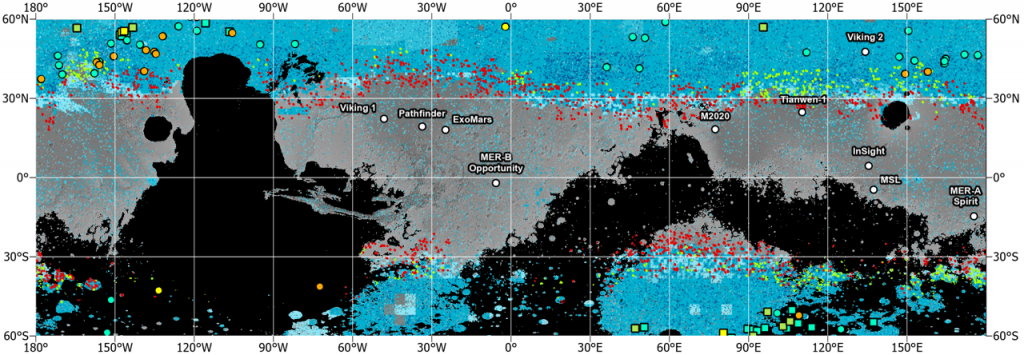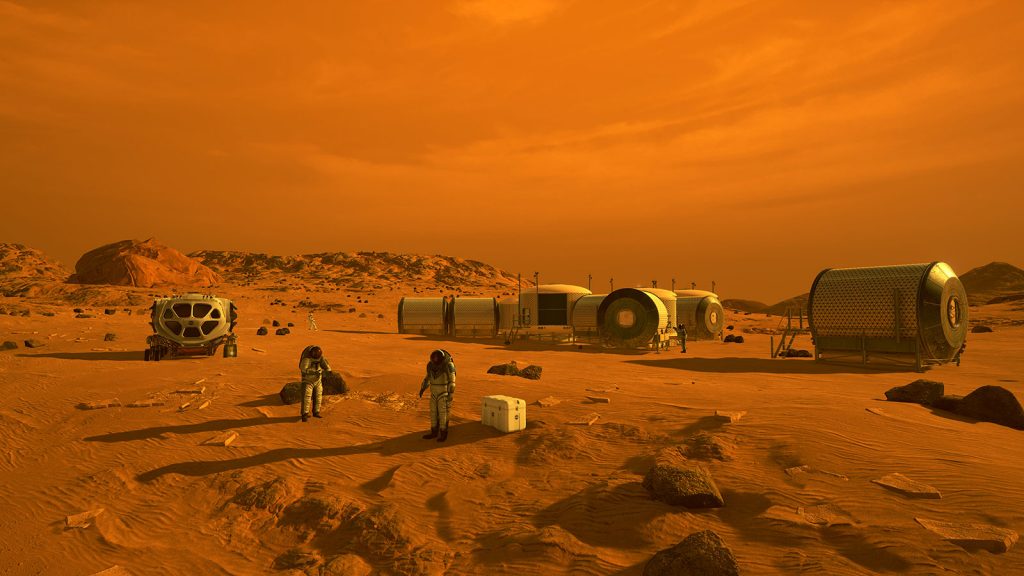By: Richard (Rick) Davis, Lauren Cho, Helena McDonald, Jamie O’Brien, Max Parks
 When it comes to human missions to Mars, one of the first questions we need to answer is “where are we going to land?” It’s a big question; the details of a landing site will help us identify a mission’s required infrastructure and science goals. More than that, the success of a mission will depend, in part, on the landing site’s characteristics. There are an entire planet’s-worth of possible landing sites, but it’s crucial that we choose a good one.
When it comes to human missions to Mars, one of the first questions we need to answer is “where are we going to land?” It’s a big question; the details of a landing site will help us identify a mission’s required infrastructure and science goals. More than that, the success of a mission will depend, in part, on the landing site’s characteristics. There are an entire planet’s-worth of possible landing sites, but it’s crucial that we choose a good one.
The process of identifying potential landing sites began in earnest with the first Human Landing Site Study (HLS2) workshop in 2015. Conference organizers and attendees framed up preliminary site selection criteria based on known human mission architecture proposals and available data from Mars to begin determining what constitutes a “good” landing site.
Perhaps the most important landing site criteria highlighted at HLS2 was the potential of water as a deciding factor in site selection. Water is useful as an ingredient for rocket fuel, essential for crew health, and an important science target.

There are two available feedstock options for water: subsurface ice and hydrated minerals. Subsurface ice can be found from the mid-latitudes to the poles. By drilling into subsurface ice and melting it, the water can be extracted for utilization. Hydrated minerals have water molecules locked up within the rocks and regolith, but processing these materials to extract their water content can be a very energy intensive process. Access to subsurface ice has also become an increasingly important science priority for many space agencies including the US (as outlined in the recent Decadal Survey). Therefore, landing near subsurface ice for access to water will probably be a crucial factor for selecting a site. See the figure below for a map of subsurface ice regions on Mars:
Another major element of site selection is landing site altitude. A site’s altitude is directly correlated with the thickness of the atmosphere above it—the higher the site is, the less atmosphere, which means less air to slow a spacecraft as it lands. Additionally, while past rovers or landers weighed in around 1000 kg, crewed mission landers will be 10 to 15 times larger or more. As mass increases with crewed mission landers, maximizing the available atmosphere for slowing down the heavier spacecraft is critical. This makes lower altitude sites more ideal for human Mars missions.
Mars missions will also rely on selecting landing sites that are less dusty. We are trying to avoid areas with thick deposits of dust since dust can be problematic. Dust can cover solar panels, gunk-up machinery, get into seals making it difficult to make them airtight, and also pose challenges to human health. To determine whether a surface is dusty, we can measure the surface reflectively, the measure of how much light is bounced off a surface; the higher the surface reflectively, the dustier the surface. The dustier it is, the harder it is to operate missions, which means selecting a site with reduced dust will be advantageous not only for the crew, but for their equipment as well.
Human missions to Mars will also require a significantly larger power supply than robotic ones, often generated through a combination of solar and nuclear power. Maximizing solar exposure by choosing a landing site closer to the equator will allow us to generate such power through sunlight—as on Earth, locations closer to the equator get more and stronger sunlight. The day length over the course of the Martian year will also play a role. Mars’ axis is at a larger tilt than Earth’s, which means seasonal variations in sun exposure are more extreme on Mars. Viking 2 landed at 48 degrees north latitude (as far north as Minnesota on Earth) and saw 16-hour days in the summer, but only received 7 hours of very weak sunlight in the winter, similar to the 15-hours and 9-hours of sunlight that Minnesota receives in the respective seasons. For long-duration missions, choosing a site that is closer to the equator will be better for solar insolation and exposure to meet our power needs.


Temperature will also play a role in ensuring that machines will be warm enough to operate in the below-freezing Martian temperatures—the extremely cold temperatures of Mars will be hard on the equipment we use. Locations further north on the planet will result in even colder temperatures, while locations closer to the equator get more sunlight and maintain a higher ambient temperature. For instance, the equator on Mars may reach a maximum of around 70°F (20°C) and a minimum of -100°F (-73°C), while in the mid-latitudes, the maximum will be around 32°F (0°C), but can get as cold as -148°F (-100°C). This means that a landing site closer to the equator will be more suitable to keep equipment warm enough to operate, thanks to higher ambient temperatures.
Lower latitudes are also useful from a launch perspective. Launching from lower latitudes (near the equator) lets us take advantage of the spin from the planet to make it easier for rockets to get to orbit. Launching with more fuel means launching more mass, so the use of local fuel on Mars will be required, involving considerable amounts of infrastructure and power. However, by taking advantage of the planet’s angular momentum when launching, you require less fuel to get off the surface and into orbit, and therefore, can reduce time and energy needed for extracting water to produce fuel locally.
Lastly, and perhaps most importantly, a landing site must provide compelling science targets for human exploration on Mars. The first missions to the Red Planet will be defined by the science done once the astronauts are on the surface. These first explorers will perform experiments to study the climatology and geology on Mars, collect samples to bring back, and work with teams of scientists back on Earth. Perhaps their highest priority tasks will focus on the search for potential signs of past or present life. Choosing a landing that is not prone to supporting microbial life will also enable scientists to study the natural environments of Mars more accurately, without the interference of—or contamination by—Earth life. Therefore, it is crucial that we land in an area that allows our astronauts to achieve the maximum science objectives; current mission architectures expect astronauts to explore up to a 100 km radius area around the landing site. See below for an example of a 100km exploration zone radius.

As we work to determine exactly where our landing site will be, other experts will design the spacecraft and habitats, outline the exact mission goals, and select astronauts. Throughout this process, reconnaissance data and mission planning will continue to work with one another to arrive at a coherent solution. It’s important to keep in mind that this process is a long and iterative one. As we make significant advancements, it will be important to revisit and revise some of our previous criteria according to new technology and information that emerges.

Once we have a site selected, we can begin preparing for our years-long journey to our next planetary destination: Mars.
